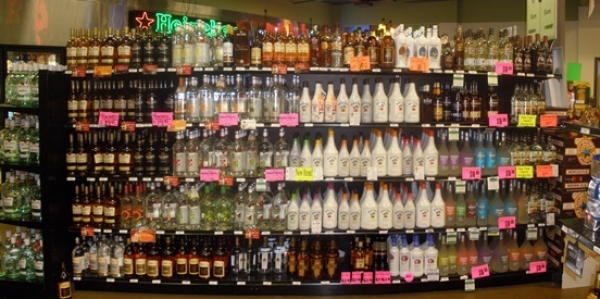

A rum display in a liquor sore. O’Dea at WikiCommons [CC BY-SA 3.0 (http://creativecommons.org/licenses/by-sa/3.0)
13 February 2015
I’ve been around recovery from addiction for over ten years. I’m in recovery myself, and I have counselled many addicts and alcoholics who have come in and out of my office. Right now I’m doing what I love the most. I’m trying to find ways to create awareness about addiction and alcoholism; problems that are destroying our society.
I have come across people from different backgrounds, cultures and religions – each with their own stories and each who have known the trauma, loneliness and degradation experienced when the drugs stop being fun, and start becoming a necessity, dominating the lives of the addict and family members. I’m not writing about the morals involved in addiction, or the disease model of addiction which is sometimes debated. I’m writing about the human beings who are at their “rock bottom”, who need and want help.
I remember the judge who came for treatment who could spend as much as he liked on getting well again, the performing artist, and the young nyaope user from Diepsloot whose family raised money within the community for her to come to treatment. I receive call after call from desperate mothers, fathers, sisters and brothers who’s loved ones are using nyaope. They need help for the whole family, not just the addict or alcoholic.
I do assessments and admissions for a treatment centre and my phone rings constantly from people who are desperate to find help, family members as well as the addicts themselves.
Those who have a medical aid are lucky, the shortfall they must pay for is less. Treatment can cost thousands of rands. Some find a sponsor who pays for their stay. Most people cannot afford appropriate treatment. They will never be able to afford the costs. Free rehabs have long waiting lists and the process to be admitted is complicated.
Patients come and go and come in again for treatment – their personal battles when they leave treatment include going back to the streets where they live, where their dealer or bottle store can be found on the corner. To most, after care is difficult. Affordability for therapy is not there and support group meetings are sometimes far away and travelling to them is dangerous at night.
There are problems that pose bigger obstacles. Women are not meant to have addiction problems and therefore they sometimes suffer in silence, eventually experiencing judgement at the hands of their communities. They have children and they can’t complete a residential inpatient treatment programme. Men have their own problems. Society says that men are not supposed to have weaknesses, they are seen as providers and must be strong no matter what.
Addiction and alcoholism increase infection rates of HIV/AIDS and other diseases. Increases in domestic violence is linked to substance abuse.
According to a survey published by the Department of Social Development:
Alcohol is the most abused substance in South Africa followed by cannabis and tobacco.
In 2007, 8% of South Africans were abusing alcohol or drugs.
Cocaine was used by 210,000 people in 2004, and this rose to 290,000 people by 2008.
In De Aar more than 10% of children had Foetal Alcohol Syndrome.
And then there is the stigma of addiction and alcoholism. People think of the bum on the bench with a bottle in a brown paper bag, or a heroin addict slumped on the floor in an alleyway with a needle sticking out of his arm. I’ve dealt with these addicts, but I have also worked with business executives, housewives and adolescents.
All of them have an equal chance of getting well if they have access to decent treatment. Unfortunately this is not true for the vast majority of people.
Dodds works with the Eden Recovery Centre. The opinions expressed in this article are solely those of the author. No inference should be made on whether these reflect the editorial position of GroundUp.